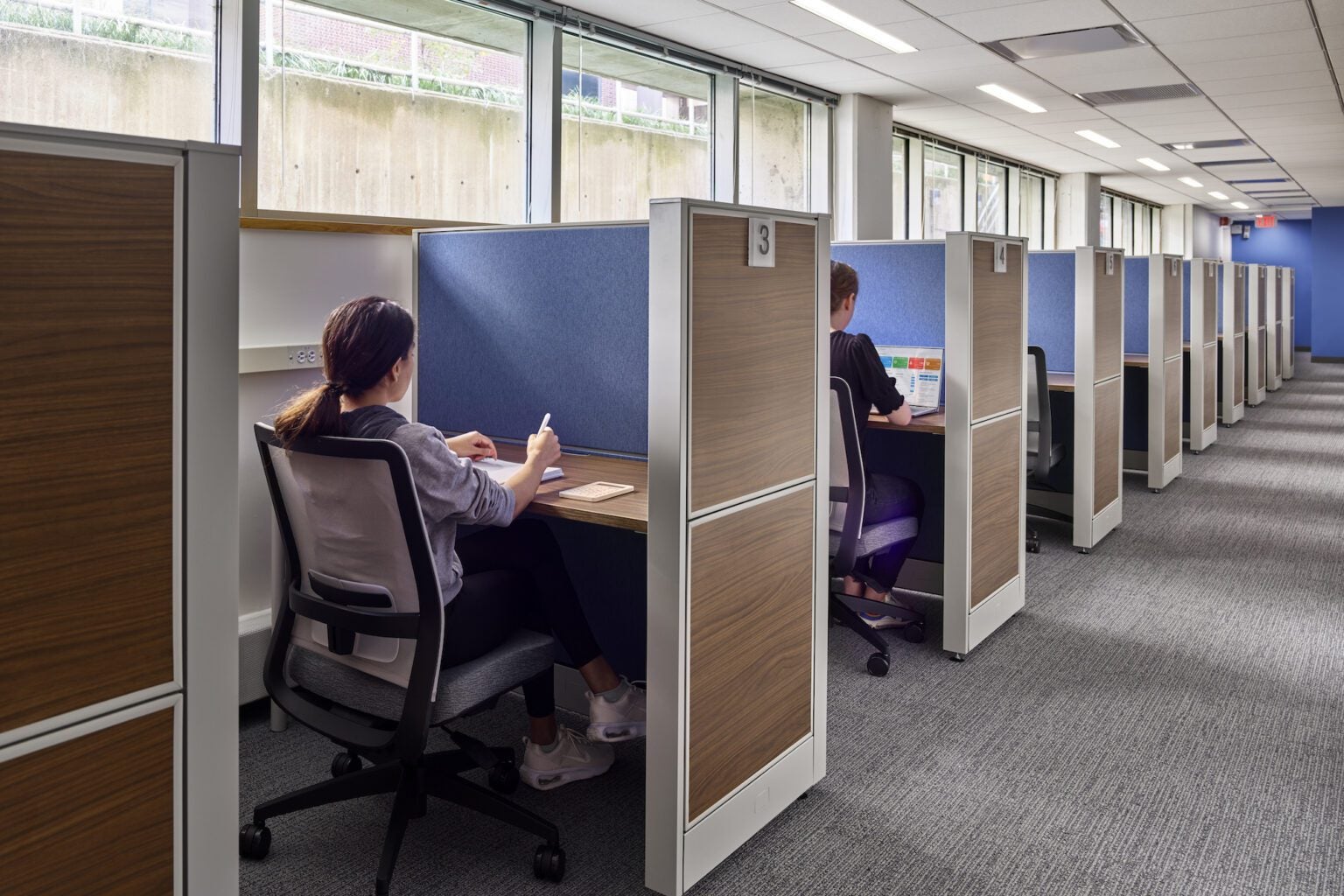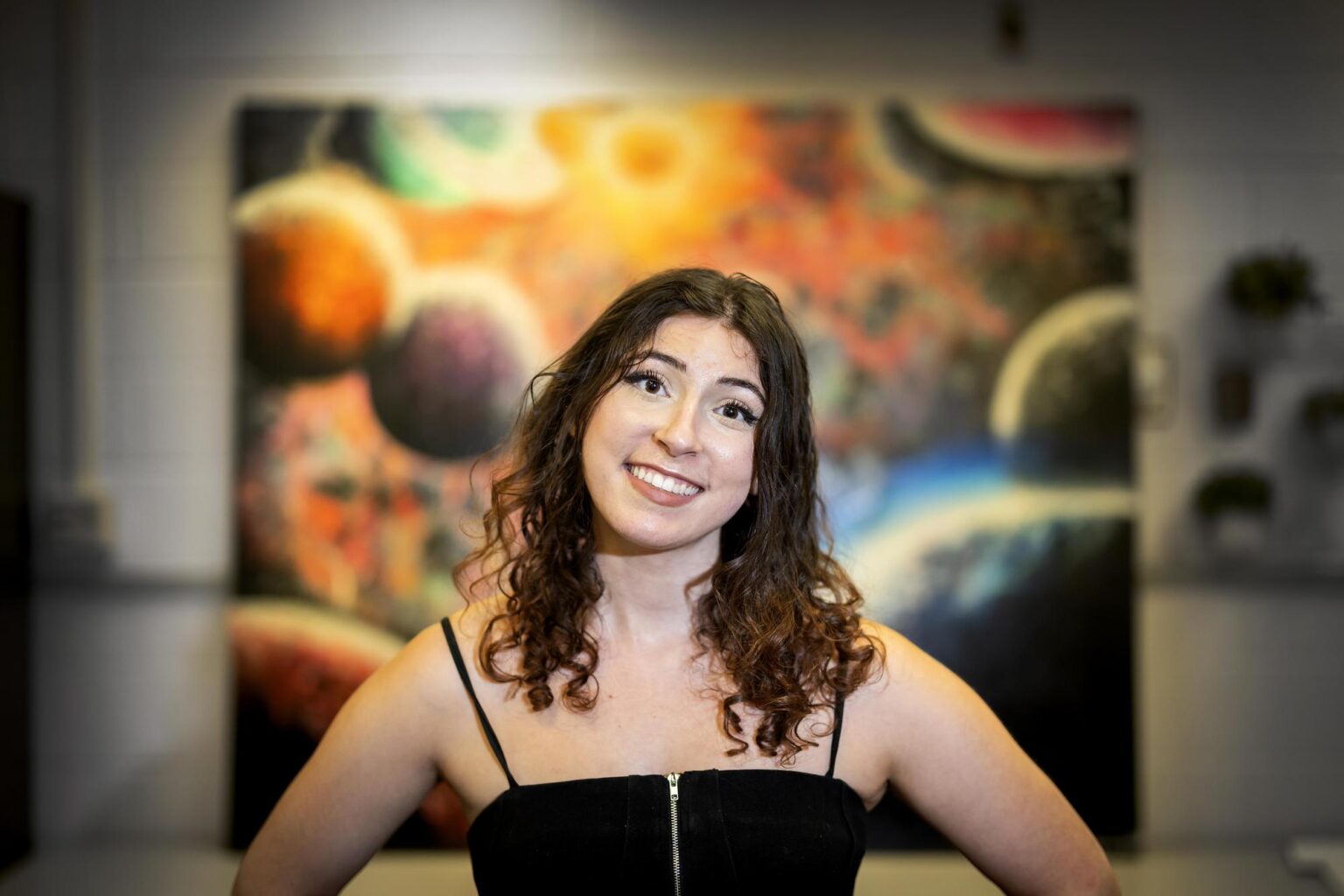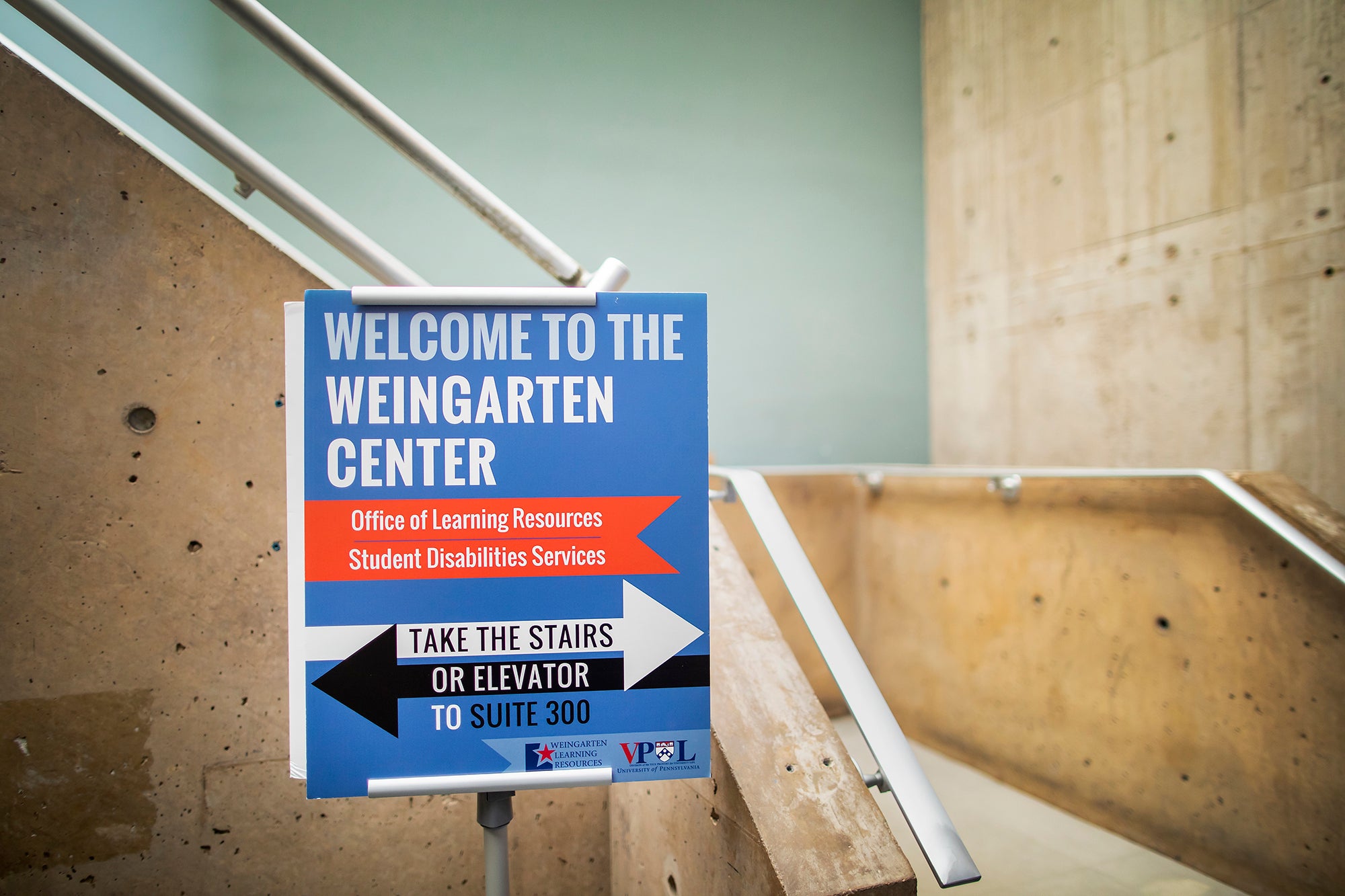About one-fifth of all college students identify as having a disability, a figure that has grown in recent decades. At Penn, students form advocacy clubs, work with the Weingarten Center, and study disability.
The summer before she started college, a black spot appeared in Sophie Kadan’s sight. Three years later, Kadan estimates that she has only about 70% of the vision in her left eye. Colors are blotchy, she says, and it gets worse at night. The transition between high school and college is huge for everyone, Kadan says, but her vision loss made things harder.
It was another year before Kadan, a fourth-year student from Doylestown, Pennsylvania, majoring in math and physics, asked for academic accommodations. She was taking a course in American Sign Language (ASL) which, unlike other languages, is almost exclusively visual. Kadan hadn’t realized how much she relied on her other senses until she was staring at a screen, watching a video of someone signing, in a roomful of other people doing the same for a timed test.
Kadan became one of hundreds of Penn students who approach the Weingarten Center’s Disability Services each year. Weingarten follows guidelines set forth by the Americans with Disabilities Act (ADA) and recognizes a range of disabilities including temporary, short-term injuries like a student needing transit or time off because of a broken limb; neurodivergence, including dyslexia, autism, and attention deficit/hyperactivity disorder (ADHD); chronic medical conditions like diabetes; and mental health conditions like anxiety and depression.
Students come to Weingarten seeking counseling or learning support or by requesting accommodations. Sometimes, they need all three. “There’s no wrong door of entering the Weingarten experience,” says Jane Holahan, executive director.
Many students come in knowing their accommodation needs and have documentation from their high schools, Holahan says. Many others come in because they’ve recently discovered they need help. “Sometimes, people hit that brick wall when they go to college,” she says.
About 20% of all Penn students identify as having a disability, Holahan says. These numbers are on par with the national average, which according to the Institute of Education Sciences was 21% for undergraduates for the 2019-20 academic year, and that number continues to increase.
In the last 20 years, the number of students registered with disability services has almost tripled, according to Weingarten. At Penn, there were 1,622 students registered with disability services through Weingarten in the 2023 academic year and 1,455 students registered in the 2019 academic year, compared with 570 registered students in the 2003 academic year, she says.

Holahan, who has worked in the field since 1998, says she started seeing an increase in requests for accommodations around 2010, before she came to Penn in 2019. She attributes this nationwide trend to an increase in awareness, not to an increase in disabilities.
Diagnosis numbers for “invisible disabilities” are on the rise. Anxiety and depression are increasing, especially among young people. According to the Centers for Disease Control and Prevention, 1 in 9 children has ADHD and the population average of autistic people is 1 in 36.
“For a long time, there were people who were afraid to self-disclose they had a disability,” says Holahan. “A lot of people did not know their rights, but now there’s better education. There’s less of a stigma in coming forward to ask for accommodations.”
Holahan attributes the decrease in stigma to the 2008 amendment of the Americans with Disabilities Act, which broadened the scope of “disability” beyond such named conditions as cancer, diabetes, and epilepsy to make it easier for people seeking ADA protection to establish their disabilities.
Increased awareness and education efforts by Weingarten and other disability-service centers and disability advocates she says are “another reason why people are coming forward.”
Disability advocacy
Kadan says that her vision loss was the first indication that she had multiple sclerosis, a degenerative muscular disease. It’s a relatively straightforward diagnosis and one recognized by the ADA. Still, Kadan was anxious about approaching Weingarten. She remembers thinking, “Is it OK for me to ask for this? Is that valid?”
By requesting accommodations, Kadan was able to test in a different room, receive extra time during exams, and use software provided by Weingarten to transcribe some of her textbooks, which she says was especially helpful in math because of the notations. Kadan also received authorization to use a notetaker to assist with her ASL coursework.
“What is a disability and what is normal?” Kadan asks. People have different relationships with disability and identity, she says, but when it comes to education, “normal” should be providing the best learning experience.

Kadan joined the Disabled Coalition at Penn. Also called DisCo, the student-run club for people with disabilities was co-founded by Lex Gilbert, a fourth-year majoring in communications and gender, sexuality, and women’s studies, and Dale Brokaw, a fourth-year doctoral candidate in the Cell and Molecular Biology Program, in the spring of 2022. With about 500 followers, the group connects over GroupMe and social media, as well as through campus events, Kadan says.
Originally, the Disabled Coalition was a social club, Brokaw says, but it quickly shifted into advocacy to meet student needs. The group meets regularly with Penn Transit to discuss accommodations requested by members and has done a physical accessibility audit of Van Pelt-Dietrich Library Center with University officials and Libraries staff.
The Disabled Coalition’s recommendations included lowering desks, increasing signage, and making the ground floor entrance more accessible to students, Brokaw says.
Brokaw primarily pursues accommodations with their lab manager, often seeking to modify seating or lab chores. “It’s interpersonal relations,” they say. That can be effective, but if there are any issues “the onus is on the student to do the advocacy and problem solving,” they say.
Brokaw is familiar with disability services, having been diagnosed with dyslexia early on in their academic career. But right before starting their graduate program, Brokaw developed long-haul COVID-19, then autoimmune arthritis. This means that in addition to learning differences Brokaw has physical symptoms. They use a walking aid and experience chronic fatigue and pain. The medication they take makes them immunocompromised, and they get sick more frequently.
Brokaw is one of DisCo’s primary advocates, a service they undertake on top of their academic work and managing a chronic illness. They’re also starting to think about life after graduation.
“People have expressed concern about me being too out about having a disability because it might affect my prospects in the future,” Brokaw says. “For any student, I think having a clear understanding of what a job will be like and how their identity fits within the job is really important.”
Brokaw and Gilbert are also interested in developing a disability advocacy network, similar to the LGBT Center’s “Faculty Out List,” a way for faculty to identify themselves so that students can connect with them and hear about experiences in the field.
Brokaw acknowledges that the logistics of developing such a list are complicated. “There’s also generational differences in how willing people are to be out, given the level of discrimination they might have felt at various points,” they say. “For students on campus, it’s a question of, ‘How is my identity interfacing with my classroom?’”

